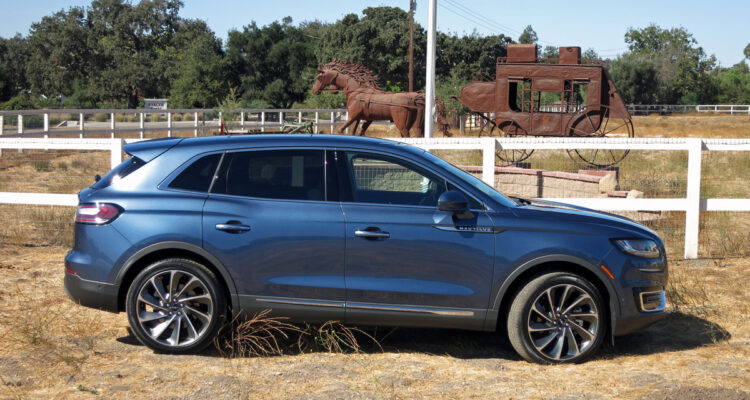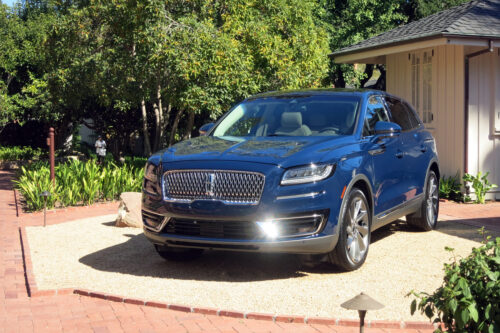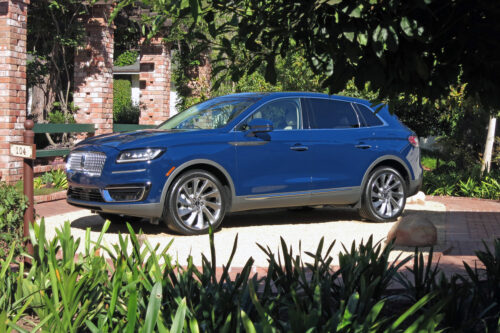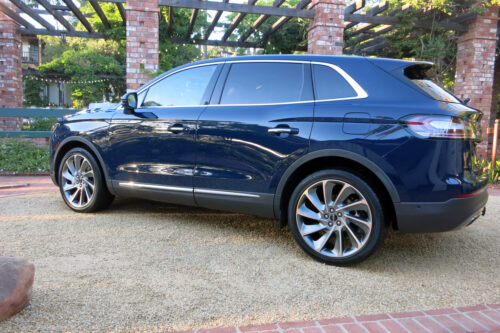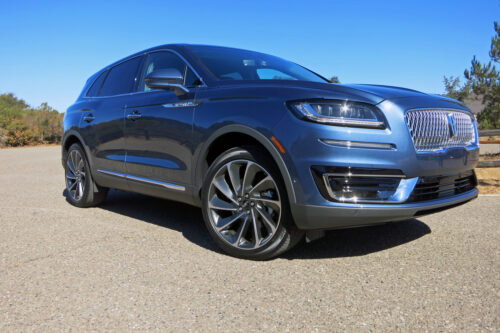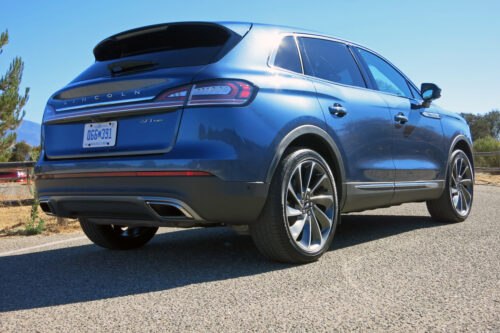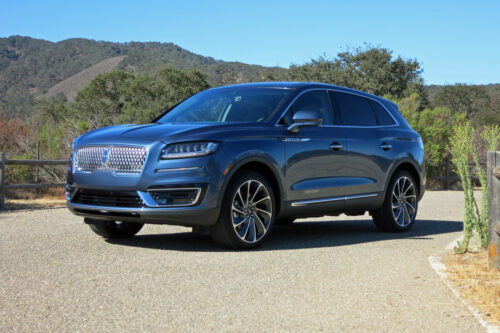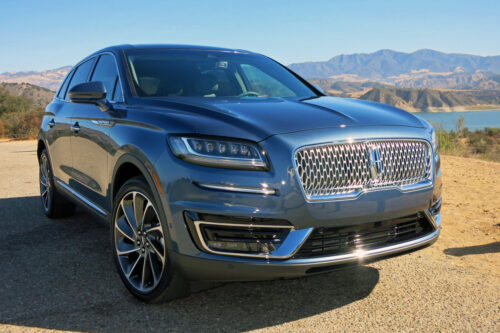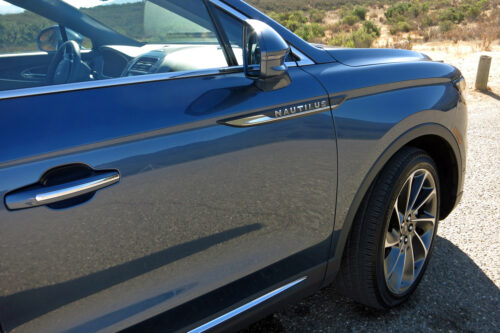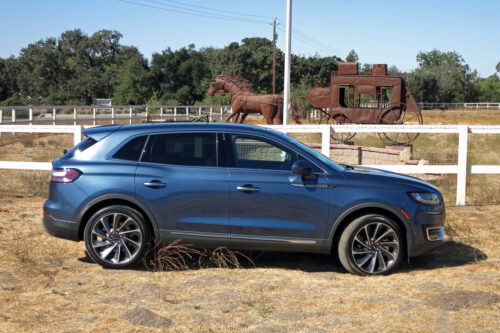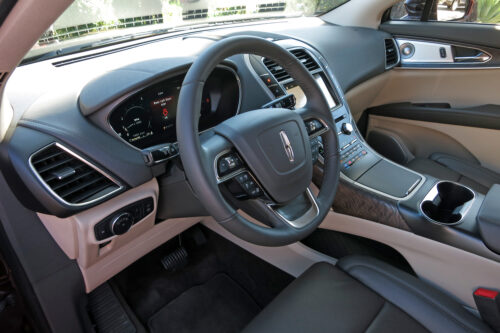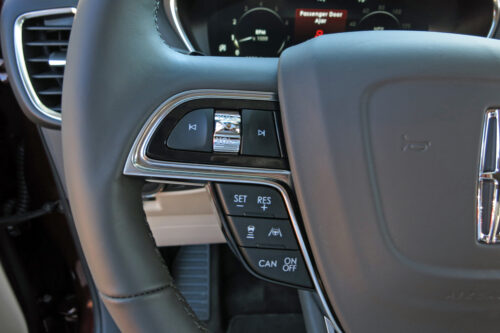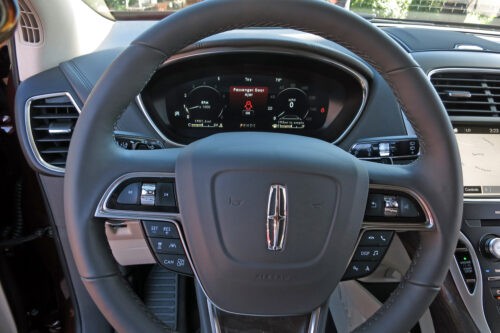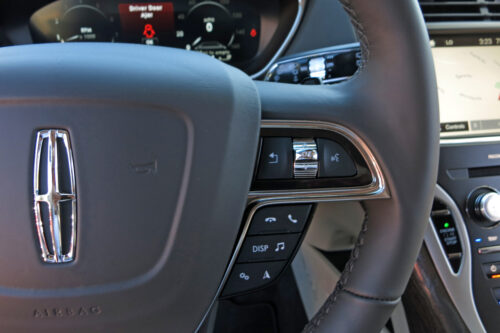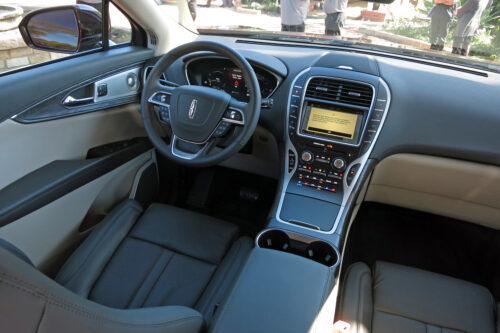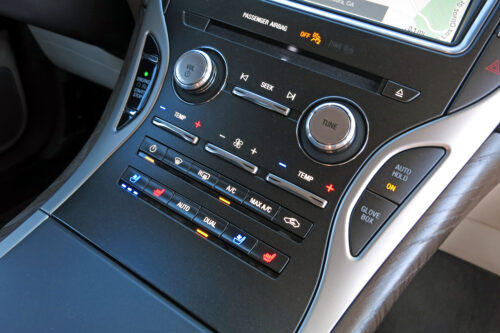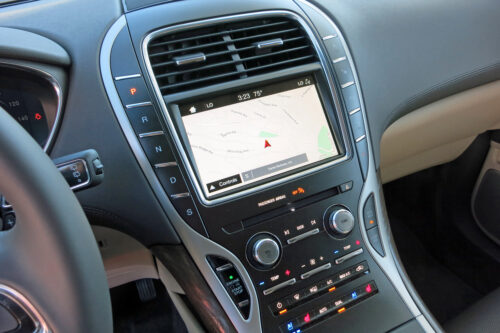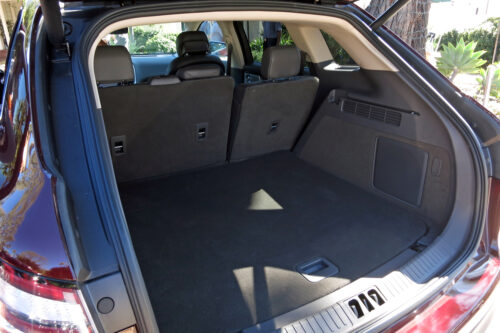In 2012, Lincoln embarked upon a journey to turn its brand around, taking it to a demonstrably higher level within the premium-vehicle segment. The strategy included adopting an aggressive cadence for the renewal or revision of its entire sedan and SUV lineup while partnering the initiative with one of the most comprehensive “client experience” programs in the industry.
The latest Lincoln vehicle undergoing a renaissance of sorts is the mid-size MKX SUV, which resurfaces as the Nautilus for 2019. But there’s much more going on here than the application of a dramatic new face, the now iconic Lincoln chrome grille.
And that’s what brings vicariousmag.com to sunny Santa Barbara.
Lincoln’s Co-Pilot360 advanced suite of driver assist features, combined with new drivetrains, defines the Nautilus as a cutting-edge SUV, replete with the latest in technology and power sources.
Co-Pilot360 is the constellation of technologies designed to “enhance driver confidence on the road.” These include Pre-Collision Assist with Pedestrian Detection combined with Autonomous Braking, and a Blind-Spot Information System with Cross Traffic Alert. Automatic high-beam lights and a Lane-Keeping System round-out the Co-Pilot360 package.
Adaptive Cruise Control is also available on the Nautilus, and it comes with a couple of nifty tricks of its own. In addition to stop/start technology, the adaptive cruise-control system also features Lincoln’s newly-introduced Lane-Centering technology, which keeps the vehicle accurately centered in its lane when well-defined lines can be read and correctly interpreted by the vehicles on-board cameras and computing.
With Lane-Centering active, a driver may release the steering wheel for up to 15-seconds, provided there are no sharp bends in the road and that the lines demarking the lane remain visible and parallel.
While the jury may still be deliberating the effectiveness of these semi-autonomous driving systems now creeping into the automotive landscape, there’s no debate around the improved powertrains from which the Nautilus benefits.
The base engine is a turbocharged 2.0L DOHC I-4, which produces 250 horsepower @ 5,500 RPM and 280 lb.-ft. of torque @ 3,000 RPM. This new mill replaces the aging 3.7L V6 engine supplied as the base powerplant in the MKX. It’s a feisty little fighter that hustles the Nautilus with vigor after a momentary phase of response-slackness when the throttle is pegged. Overall though, it delivers pleasing performance and a refined audio-track.
Fuel-economy for the 2.0T is rated at: 12.0L/100km city and 9.6L/100km highway.
The upgrade power plant is a 2.7L twin-turbocharged V6, capable of dispensing 335 horsepower @ 5,500 RPM and 380 lb.-ft. of torque at 3,250 RPM; it’s clearly the engine of choice for the spirited driver, or those intending to use the Nautilus for towing duties.
The larger engine is rated at: 12.6L/100km city and 9.2L/100km highway, which is remarkably close to the results with the 2.0L mill.
Both engines are mated to new 8-speed automatic transmissions, which functioned seamlessly during our drive through the hills of Coastal California. The mountainous roads and long stretches of freeway were ideal for putting the Nautilus through the rigors of on-road testing.
Our day behind the wheel did not include any trail or light off-road use to experience the new all-wheel-drive technology of the Nautilus, which disconnects the rear wheels when no slip or driving demands are needed beyond what a front-wheel-drive setup can competently manage.
The benefit of “disconnect” is an improvement in fuel-efficiency without, as I’m assured by Lincoln engineers, compromising traction in any given driving scenario. If so, who can argue against greater fuel-economy in these days of climate change and gas as valuable as gold.
In addition to technology, performance, and fuel-economy, engineers agonized over noise, vibration, and harshness when bringing the Nautilus to life – and it shows. The new Lincoln variant is as quiet as they come. I was particularly impressed with the absence of road and wind noises, so often a torment of the SUV segment due to their boxiness and large wheels.
Ride quality was also improved over the MKX from which the Nautilus emerged.
While the Nautilus is far more than a rebadged MKX, buyers of today’s Lincolns will benefit from a much more personal and ongoing “client experience.” That experience includes numerous new “touch points” with the customer, including pickup and delivery services when a Lincoln is due for service.
In such cases, a Lincoln representative will schedule a pickup of the customer’s vehicle, arriving within five minutes of the designated meet time. The customer will be given a new Lincoln to drive while his/hers is taken in for service, washed, and returned upon an appointed time. Lincoln also includes an Owner Concierge service within its “client experience” strategy.
These customer-focused perks carry much sway with me. Combine that level of customer care and convenience with what is arguably one of the most – if not the most – refined SUV in the ubiquitous segment, and you have a product that will serve to restore the prominence of the Lincoln brand.
2019 Lincoln Nautilus
Price range (before taxes and options): $50,450.00 – 55,350.00
Configuration: AWD mid-size SUV
Engine/transmission: 2.0L DOHC turbocharged I-4, 250 hp. 280 lb-ft torque / 8-speed automatic
Optional engine/transmission: 2.7L twin-turbo V6, 335 hp. 380 lb-ft torque / 8-speed automatic
Fuel-economy ratings 2.0L (L/100km): 12.0L city / 9.6L highway
Fuel-economy ratings 2.7L (L/100km): 12.6L city / 9.2L highway
Warranty (basic): 4 years / 80,000 km
Competitors: Acura RDX, Audi Q5, BMW X5, Infiniti QX50, Jaguar F-Pace, Land Rover Velar, Lexus RX, Mercedes-Benz GLE, Volvo XC60
Related links:
Lincoln Canada



